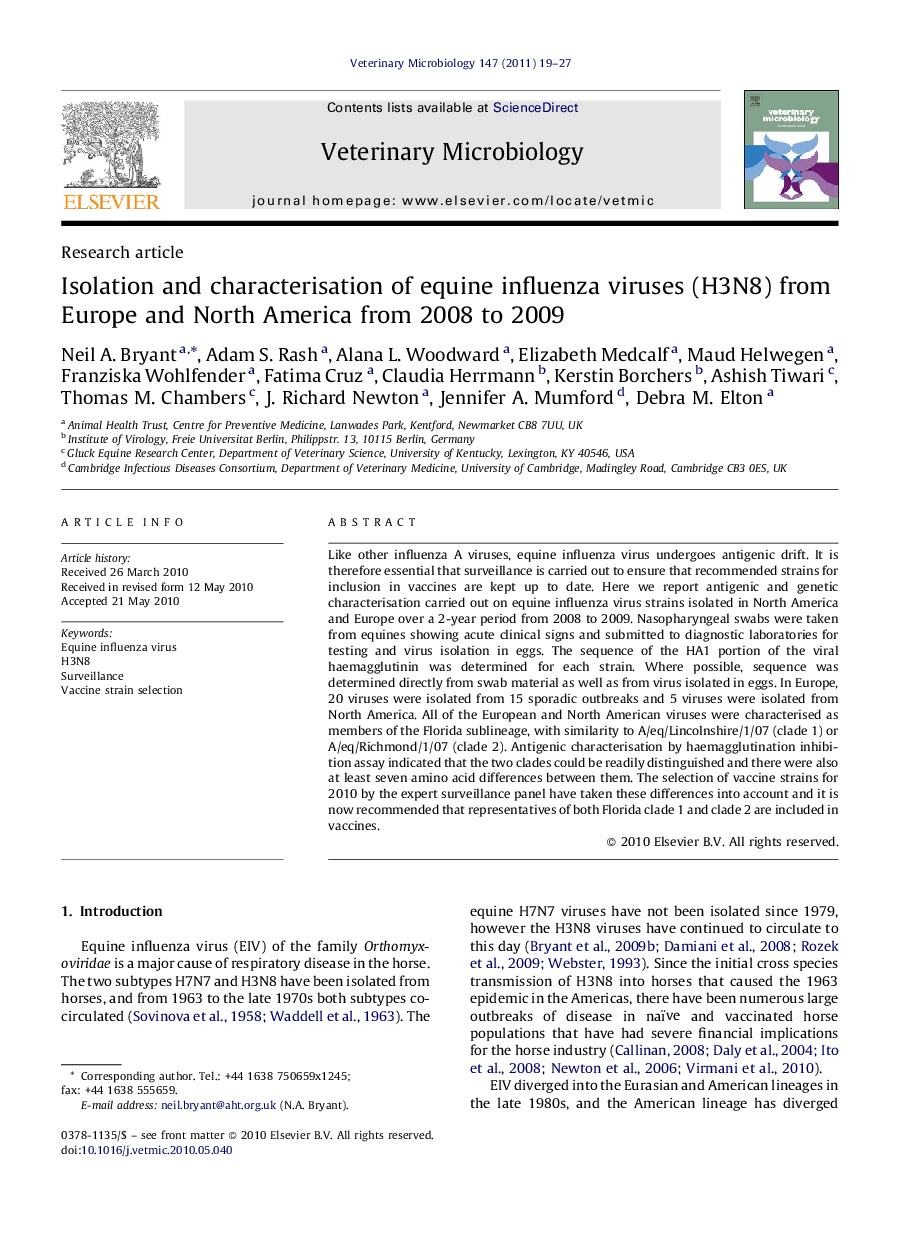| Article ID | Journal | Published Year | Pages | File Type |
|---|---|---|---|---|
| 5801513 | Veterinary Microbiology | 2011 | 9 Pages |
Like other influenza A viruses, equine influenza virus undergoes antigenic drift. It is therefore essential that surveillance is carried out to ensure that recommended strains for inclusion in vaccines are kept up to date. Here we report antigenic and genetic characterisation carried out on equine influenza virus strains isolated in North America and Europe over a 2-year period from 2008 to 2009. Nasopharyngeal swabs were taken from equines showing acute clinical signs and submitted to diagnostic laboratories for testing and virus isolation in eggs. The sequence of the HA1 portion of the viral haemagglutinin was determined for each strain. Where possible, sequence was determined directly from swab material as well as from virus isolated in eggs. In Europe, 20 viruses were isolated from 15 sporadic outbreaks and 5 viruses were isolated from North America. All of the European and North American viruses were characterised as members of the Florida sublineage, with similarity to A/eq/Lincolnshire/1/07 (clade 1) or A/eq/Richmond/1/07 (clade 2). Antigenic characterisation by haemagglutination inhibition assay indicated that the two clades could be readily distinguished and there were also at least seven amino acid differences between them. The selection of vaccine strains for 2010 by the expert surveillance panel have taken these differences into account and it is now recommended that representatives of both Florida clade 1 and clade 2 are included in vaccines.
